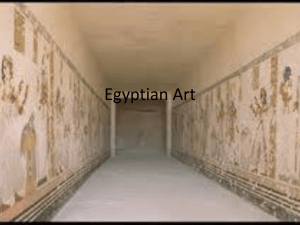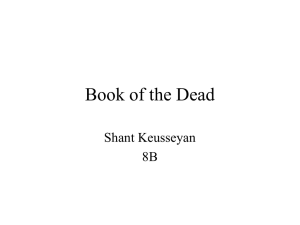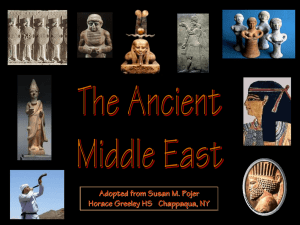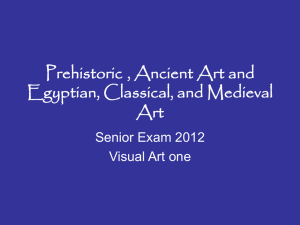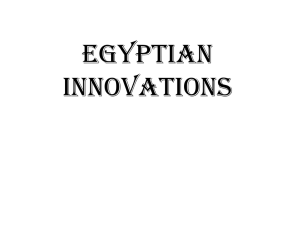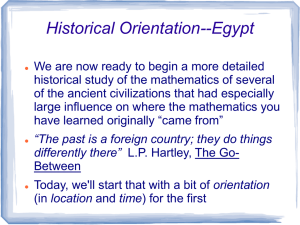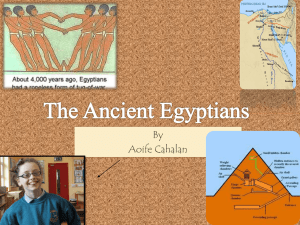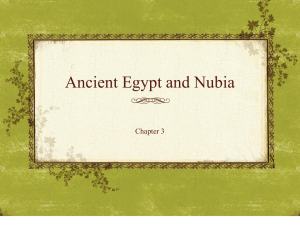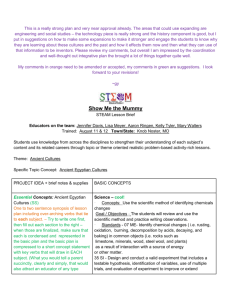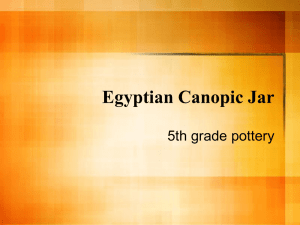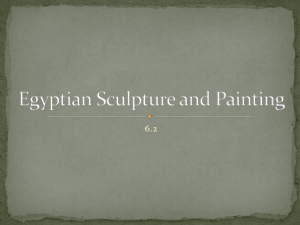Egyptian art
advertisement
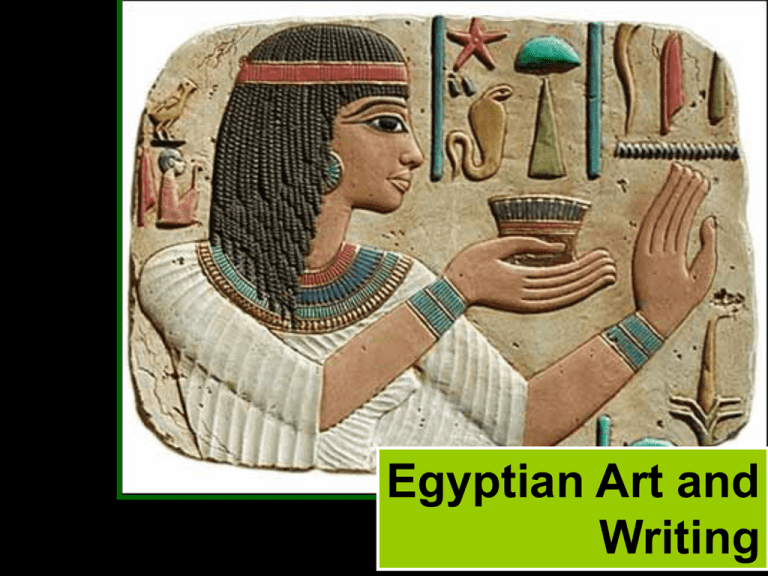
Egyptian Art and Writing The Rosetta Stone In 1799, Napoleon took a small troop of scholars, linguists and artists on a military expedition of Egypt and found the Rosetta Stone (named for the Rosetta coast of the Mediterranean where it was discovered) Composed of three languages: 1) Formal Egyptian Hieroglyphic 2) Demotic (Late Egyptian) 3) Classical Greek (which they knew how to read) This stone became the key to unlocking the meanings behind Egyptian hieroglyphics! • Egyptian writing is called hieroglyphics. • Hieroglyphs were based on consonant sounds not vowels – consist of over 700 signs. – usually words were written from right to left, but sometimes scripts were also written from left to right, top to bottom, and bottom to top. The Egyptian art of Writing - - Reading/writing primarily happened in the temple or the pharaoh’s residence Highly respected the written word The ancient Egyptians had the same word for writing as for drawing— medu netcher—which meant literally “the words of the gods,” or “divine words.” Believed that texts were divinely inspired Only about 4 out of 1000 could read or write • The word “paper” comes from “papyrus” • The ability to read and write was considered a very important skill – earned you a high paying job and respect of others – “Wealth and success is promised to the good pupil. If you have any sense, you will be a scribe” (taken from an ancient text) – “The metalsmith works in the heat of the furnace. He stinks like rotten fish eggs” (taken from an ancient text) • It took Egyptian boys (only those from rich families) several years of hard work to learn to read and write. – Trained from about 5-9 years old • Wrote with pens made from reeds and dipped in ink made from water and soot • Not much is known about Egyptian schools • Surviving texts show spelling mistakes with teachers’ corrections • Discipline was strict – “A boy’s ear is in his back; he listens when he is beaten” Ancient Egyptian art is five thousand years old. Expressed in paintings and sculptures, it was highly symbolic and fascinating. Despite the longevity of the Egyptian civilization, the art remained very much the same. This is remarkable considering how extreme the differences in art expression that have occurred in the modern world in just the past 100 years or so. Most Egyptian art is found underground in tombs or in the pyramids. Most of what we know about Egyptian art comes from the paintings the Egyptians created in the tombs of rich people when they died. Considering these examples of Egyptian art, what would you say about the artistic style? Frontalism This is the name given to the Egyptian style of painting. Realism was simply not a goal of ancient Egyptian Art. It is these very formal and stylized rules that have made Egyptian Art one of the most widely recognized forms of art in the world. Every known piece of Egyptian art was drawn in this style. Rules of Frontalism Rule #1: Head/Face - Head always in profile – but ONLY the head - Eye shown from a frontal view - Faces shown as serene and peaceful Rule #2: Stance - Body always shown from a frontal view - Both feet, legs, arms, hands shown - Legs face same way as the head - One foot in front of the other - Gods and pharaohs have a rigid and formal stance Rule #3: Colour - Men painted in red ochre - Women painted in yellow ochre - Other colours used were white, black, blue and green Rule #4: Scale - Objects/people were not shown accurately in terms of size - The more important a person or object, the larger it was eg. A man might be larger than a group of trees - A Pharaoh was always the largest figure in a drawing Rule #5: Proportions - Hands and feet often large compared to the rest of the body To the ancient Egyptians, their schematic and conceptual image of the body mapped within a grid system was a divine gift that would be spoiled by any deviation from the norm. Ancient Egyptian art is characterised by the idea of order. Clear and simple lines combined with simple shapes and flat areas of colour helped to create a sense of order and balance in the art of ancient Egypt. Egyptian Funerary Art is the most common painting found – see handout

